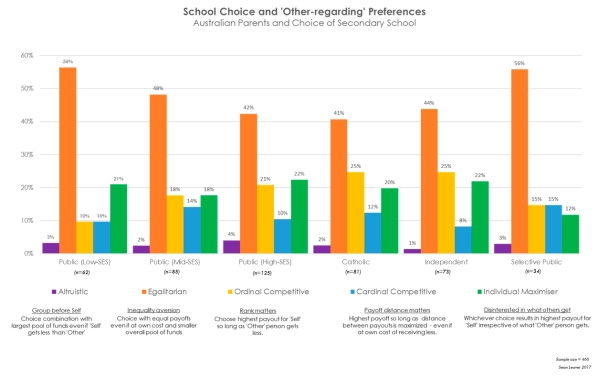The Australian (conservative) government has finally embraced the Gonski school funding reforms. For those outside Australia, ‘Gonski’ (named after David Gonski who lead the review) is a ‘needs based funding model’ where schools with low socio-economics student cohorts receive more funding than comparative schools with a cohort of higher socio-economic students. Gonski was originally implemented by the previous Labor government and has proven to be extremely popular with the electorate. Even though up to 30% of students in some states (for example Victoria) attend private schools.
Australia has a ‘universal voucher’ system where funding is on a per student basis out of national taxes. Via state governments for public schools and directly for private schools. Consequently, private schools in Australia are partly funded by the government plus additional fees paid by parents.
It is interesting given Australia’s flexibility in school choice – mixing public and private education – that there is very strong support for a funding model that re-balances natural inequities within an education system due differences in wealth. In contrast to the USA where electoral support for a progressive funding model for education seems to be lacking. The difference between Australia and the USA may have something to do with the social preferences of parents.

Higher resolution pdf: Social preferences of Australian Parents
In my research into the behavioural mechanics underlying how parents choose schools in Australia I found that Australia parents are predominantly egalitarian in their behaviour. That is, when presented with a set of options dividing money between themselves and another person 46% of parent choose the option where the amounts were equal. Even though this option required them to ‘give up’ an alternative with a larger amount for themselves. Suggesting strong inequality aversion. This held even for parents who send their children to private schools, Catholic and Independent schools.
In the online survey parents were given five options. An altruistic choice that gave more to the other person and the total amount of both payments together was greater than all the other options. Providing an incentive to prefer an ‘overall social outcome’. An egalitarian choice as described above. An ordinally competitive choice where your share was more than the other person – that is, simple rank outcomes matter. A cardinally competitive choice where your share was much larger than the other person (but less that the other choices) and you were willing to sacrifice some of your share to ensure the other person got even less. That is, the distance between what you get and the other person gets matters. An individual maximizer choice where your share was the largest of all choice irrespective of what the other person got. That is, a classical self-interested choice that doesn’t care about the what the other person gets. All these choices had to be consistently chosen across two choice sets presented in the survey. And the individual maximizer choices where constructed in a way that the position changed relative to the other types in the two choice sets necessitating a particular and consistent choice across the sets. I’ve chosen ordinal and cardinal as the names for the competitive types because the decision making is similar to ordinal and cardinal preferences. They could have alternatively been called soft/hard or weak/strong competition.